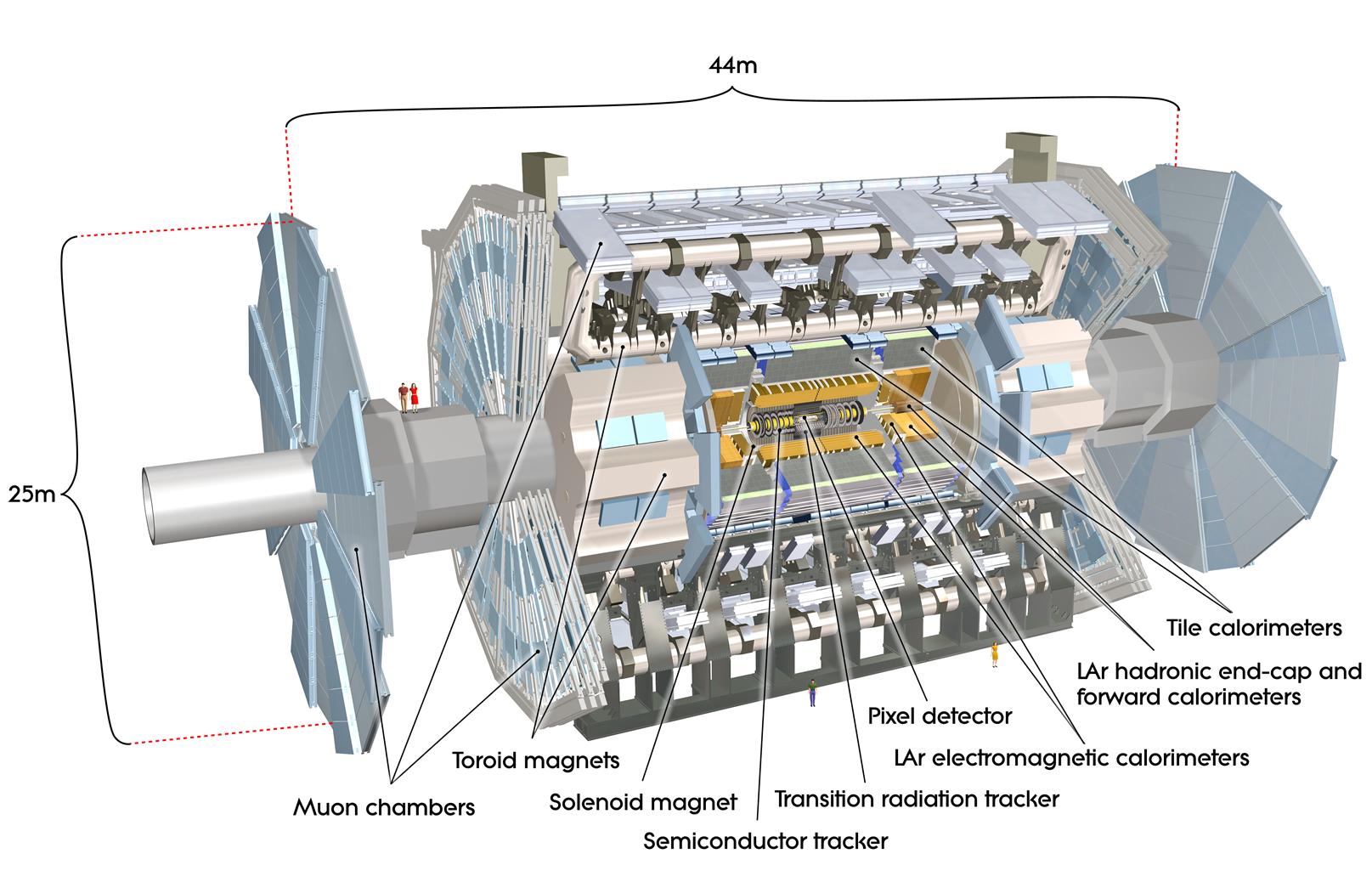Experimental Nuclear and Subnuclear Physics: ATLAS
ATLAS (A Toroidal Lhc ApparatuS) is one of two general-purpose detectors at the LHC. It investigates a wide range of physics, including the search for the Higgs boson, the scenarios beyond the Standard Model, and particles that could be candidates for dark matter. ATLAS has recorded and will record sets of measurements on the particles created in the LHC collisions - their paths, energies, and their identities. The Pavia group counts 15 people at present. It has been involved in the construction of one of the ATLAS detecting systems (the Muon Detector) and in the development of the trigger architecture. Now it is active in many different areas, from system maintainace to data analysis and in activities connected to the construction of new detector elements for future data taking. As the experiment is currently in its working phase, there is a wide range of possibilities and opportunities for both diploma and PhD thesis.
Higgs Studies The Pavia group has been involved since several years in the Higgs studies, contributing to the Higgs discovery in the SM H->ZZ->4l channel. During the last years, it has also been active in a LHC-wide effort to calculate Higgs cross sections, branching ratios and pseudo-observables, together with their uncertainties, relevant to SM and MSSM Higgs boson(s), to facilitate comparison and combination of results (D. Rebuzzi). The Pavia group has also always taken active part to the MonteCarlo activities: generator development and maintenance, sample preparation and dataset validation (G. Polesello, D. Rebuzzi). Part of the ATLAS Pavia group recently got involved in Vector Boson Scattering dedicated studies (EU COST project VBSCan), to indirectly investigate the Electroweak Sector of the Standard Model and its symmetry breaking.
SUSY Analysis The search for physics beyond the Standard Model, together with the measurement of the properties of the newly discovered Higgs boson, is the main goal of the analysis of the LHC data. The Pavia group has long story in the investigation of Supersymmetry (SUSY), one of the main candidates for new physics. Our analysis group (G. Polesello, G. Gaudio), working in close collaboration with other Italian groups in ATLAS has a leading role in these searches. The main field of interest at present is the search for a supersymmetric partner of the top quark with the data collected in 2012 at a center of mass energy of 8 TeV, and the preparation for the data taking in 2015 at 13 TeV, which will open a new window of opportunity for discoveries.
MicroMegas Upgrade LHC experiments will alternate in the future periods of data taking with shut down, to update and upgrade the performances of the detectors. The present ATLAS forward muon spectrometer will be replaced in 2018 with NSWs (New Small Wheels), composed by sTGC (small Thin Gap Chambers) for the trigger, and MM (MicroMegas) chambers for the tracking. The Pavia MM group (R. Ferrari, G. Gaudio, G. Introzzi, A. Lanza, M. Livan) is deeply involved both in the R&D and in the future construction of MM detectors, that will have to stand a very high flux of incoming particles. One person (A. Rimoldi) is also working at the simulation of the new chamber performances, developing and using a dedicated software.
Trigger, DAQ The physics results of the ATLAS experiment depend significantly on the efficiency and reliability of the trigger and data acquisition system, that is supposed to select and record the most interesting events reducing the data rate from 40 MHz to about 1 kHz. Our group participated to the design, implementation and maintenance of the current system and it is involved in the upgrade projects (R. Ferrari, A. Lanza, A. Negri, V. Vercesi). The ongoing activities are: • data flow system: the scheduled LHC upgrade entails new challenges for the ATLAS data acquisition system, that will have to cope with higher rates, bandwidths and processing power needs. The data flow architecture is therefore under redesign with the focus on the exploitation of the latest networking and computing technologies. • FastTracker (FTK): the ATLAS upgrade project foresees a new hardware trigger, that can provide in few microseconds high-quality tracks reconstructed over the entire inner detector. FTK solves the combinatorial challenge inherent to tracking by exploiting the massive parallelism of associative memories that can compare inner detector hits to millions of pre-calculated patterns simultaneously.
Staff: Roberto Ferrari, Gabriella Gaudio, Gianluca Introzzi, Agostino Lanza, Michele Livan, Andrea Negri, Giacomo Polesello, Daniela Rebuzzi, Adele Rimoldi, Valerio Vercesi




